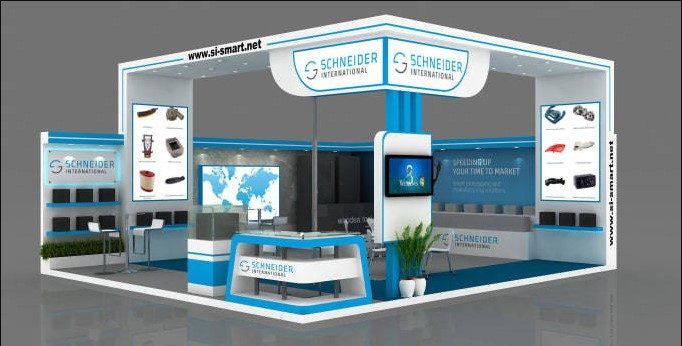When it comes to event marketing and attracting people to your trade show booth, the appropriate graphic design visuals may make all the difference. Is it possible that your current exhibiting strategy could be improved?
Everything event organizers need to know about producing high-quality trade show exhibit graphics is outlined below. If you want to make your booth stand out at your next event, follow these guidelines.
WHY ARE GRAPHICS SO IMPORTANT AT TRADE SHOW?
You’re probably attending trade exhibitions or other events to promote your business and gain new clients or customers. You may help your team achieve these objectives by including well-designed graphics into your display. Here are a few examples of how high-quality exhibit graphics might help:
- Make a good first impression before you even mention your company.
- Increase the number of people who attend a trade exhibition.
- Make yourself stand out from the crowd, especially your competition.
All of these marketing/promotional advantages can help you enhance your trade show ROI by increasing sales, signups, and registrations. Invest in good graphic design if you want to get the most bang for your dollars.
IDEAS FOR BETTER GRAPHICS DESIGN AND PRINTING
Now let’s look at the precise design strategies you should employ to improve the graphics for your trade show booth. Some of the most crucial things to think about while creating and printing visuals for your next large event are:
- Dimensions: First, figure out what size your visuals should be. To do so, you’ll need to first figure out how big your booth is and how much room you have at the upcoming trade show. Consider the image’s purpose (a long format sign showing your company’s name will almost certainly need to be larger than a photo of your mascot), as well as your overall graphics budget.
- Placement: Think about where you’re going to put the visuals next. Will they be hung above the display? Are they going to be placed on a table? The answers to these questions will determine the size and quantity of graphics you order.
- Message: With your visuals, what kind of message are you planning to send? Messages should be limited to six words or less in general. The longer a message is, the less likely it is to be read. Make use of your exhibit visuals to display your company’s tagline or a portion of your mission statement, but don’t overcrowd them.
- Color and Contrast: For your visuals, choose colors that are consistent with your company’s branding and desired color palette. This aids in brand awareness and guarantees that customers can readily locate your booth. Also, make sure you use contrasting hues. Contrasting colors make it easier to read writing and help your exhibit stand out on the trade show floor.
- Typeface: Stick to fonts that are easy to read. Anything too complicated may be difficult to read and may obstruct your marketing efforts. Also, look for fonts that are consistent with your company’s brand. If your brand voice is lighthearted and whimsical, for example, seek for a typeface that reflects that.
- Durability: Do you want to spend money on fresh graphics for every trade fair you go to? Most likely not. You can save money in the long term by investing in high-quality, long-lasting graphics from the outset and ensuring a consistent, professional image at every event.
- Dots Per Inch (dpi): If you’re going to use images in your trade show graphics, the dots per inch (dpi) of the image is crucial to consider. The majority of photos or images copied from the internet will be 72 dpi. That isn’t ideal for a graphic for an exhibit. At their final size, they should be at least 100 dpi, but 300 dpi is the ideal option. Ordering images with a high dpi from a professional photography company is one of the simplest ways to get them.
Today is the day to start working on your exhibit design and graphics! Are you ready to elevate your trade show graphics to new heights? Keep these suggestions in mind to help you stand out at the trade show and achieve your goals.
If you need more information on graphics or would like to work with an Image consultant, feel free to contact us.


